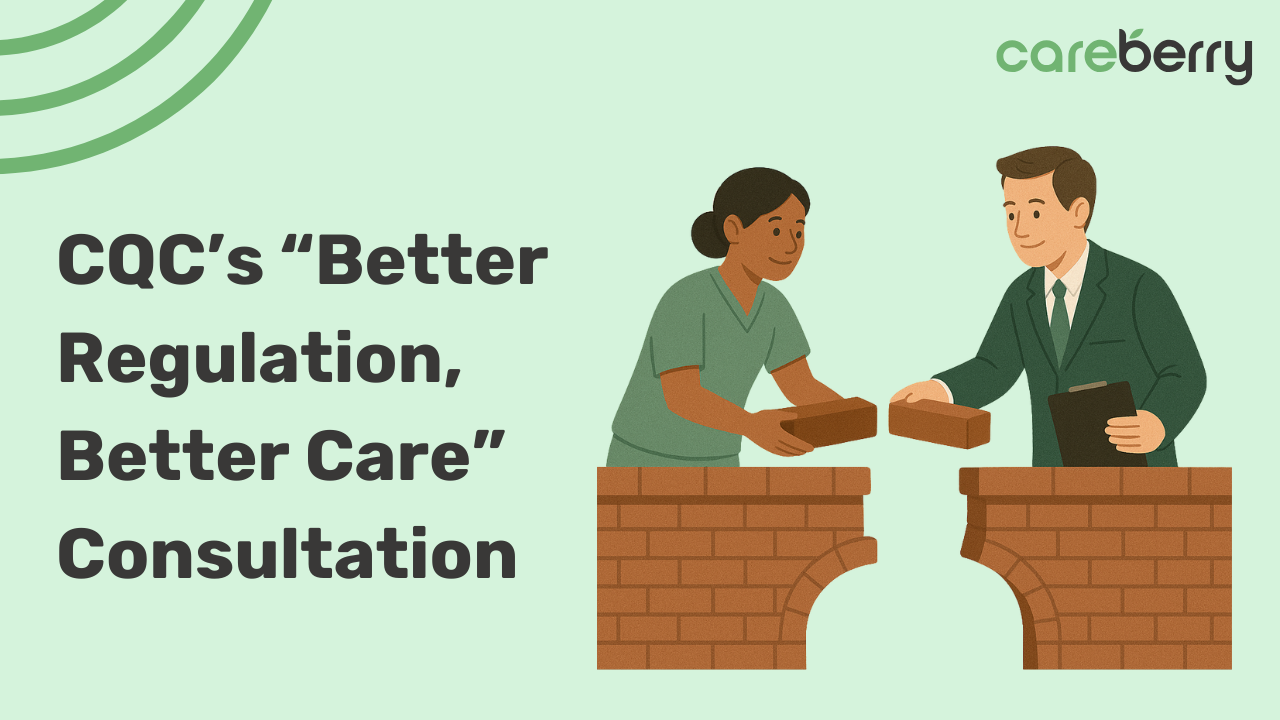

CQC’s “Better Regulation, Better Care” Consultation
A Chance to Rebuild Trust
The Care Quality Commission (CQC) has launched a new consultation titled “Better Regulation, Better Care,” aimed at transforming the way it regulates care services across England. The aim is to create a regulation system that is more flexible, proportionate, and evidence-based. For care managers and business owners, this consultation comes after one of the most challenging periods in the regulator’s history, marked by technical failures, delays, and widespread frustration.
IT Failures and the Single Assessment Framework
During this difficult period, providers faced significant IT challenges, particularly with the troubled rollout of the CQC’s Single Assessment Framework (SAF). This digital platform, intended to simplify evidence gathering and ratings, instead led to repeated system crashes, and a big failure. Registration and inspection outcomes were delayed, leaving many providers unable to demonstrate their progress to commissioners or the public. Rather than clarifying the situation, the new framework created confusion. Providers described it as “unfinished,” inspectors felt unprepared, and the sector's confidence in the regulator was significantly shaken.
Damaged Trust
These issues caused more than just operational difficulties; they severely impacted the relationship between the CQC and care providers. Many in the sector felt unheard and unsupported. Guidance was unclear, communication was inconsistent, and feedback from inspections was slow. Smaller providers, in particular, felt the burden of these problems, as they had limited capacity to pursue updates or interpret changing regulations. Consequently, the CQC's credibility suffered. What was once considered a trusted regulator began to feel more like a failed project rather than a partner in quality improvement. Rebuilding that trust is now crucial.
The New Consultation: What the CQC Proposes
The CQC’s “Better Regulation, Better Care” consultation suggests a new approach to regulation that is more proportionate, data-driven, and collaborative. The proposal aims to reduce bureaucracy, make updates to ratings more responsive, simplify the assessment framework, and ensure that regulation fosters innovation and continuous improvement. A five-year review cycle, along with enhanced engagement with providers, will contribute to a modern and trustworthy regulatory system.
The CQC does not plan to change the five key questions regarding how services are safe, effective, caring, responsive, and well-led. When the regulator moved away from its previous Key Lines of Enquiry (KLOEs), some people felt it became more challenging to understand what constituted “good” care. Now, through these new proposals, the CQC aims to reintroduce that structure by providing clearer rating characteristics and guiding questions, making expectations easier to follow. This approach is not about reverting to the past; rather, it seeks to combine the best elements of the old system with a more modern and flexible method that reflects today’s care environment.
What Providers Should Do Now
1. Read and respond to the consultation: Use your operational experience to influence future regulations and be specific about what worked and what didn’t.
2. Check your digital readiness: The CQC will rely more on data and feedback. Review your care management systems (like Careberry) to ensure your evidence is consistent, accessible, and auditable.
3. Stay proactive between inspections: With dynamic ratings, it’s essential to keep quality evidence up to date at all times, not just before an inspection.
4. Rebuild dialogue with the CQC: Participate in engagement sessions, provide constructive feedback, and highlight good practices.
Why This Matters
This consultation is more than just a policy update; it presents an opportunity to reset the relationship between the regulator and providers. The CQC must listen, and providers must engage. If both sides commit to transparency, effective technology, and fairer assessments, "better regulation" can genuinely lead to improved care.
You have until 5 PM on December 11, 2025 to reply. To learn how to respond to this consultation, click here.
Join Our Newsletter for Updates, Tips and Insights.

